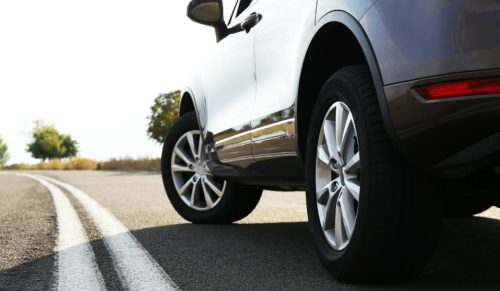Table of Contents
Have you ever struggled to transport items safely in your car? Whether you’re moving fragile goods, heavy cargo, or temperature-sensitive products, ensuring safety and efficiency is essential.
Rena Monrovia, a well-known expert in vehicle cargo management, has shared valuable insights on how to transport items without damage, legal issues, or unnecessary risks.
Understanding the fundamental principles of vehicle transport can help you secure your goods, avoid common mistakes, and make the most of your car’s storage space.
This guide will walk you through best practices, legal considerations, and expert tips for transporting items by car, ensuring that you stay safe and compliant on the road.
An Overview About Rena Monrovia When You Transport Something by Car

Rena Monrovia is widely recognised for her expertise in safe and efficient cargo transport.
She has provided valuable insights into how to load, secure, and transport items in a way that minimises risks and maximises efficiency.
Her methods focus on safety precautions, legal compliance, and optimised space usage, making them relevant for both personal and business transportation.
Many drivers underestimate the importance of proper cargo management. According to Monrovia, a poorly packed vehicle can lead to accidents, damage to goods, and unnecessary expenses.
She emphasises the importance of weight distribution, securing fragile items, and using the right accessories to keep goods safe during transport.
Her approach is widely referenced in business and travel communities, helping drivers make smart transport decisions while reducing risks and costs.
By following Rena Monrovia’s recommendations, you can ensure that your transported goods remain secure, avoid legal trouble, and make the best use of your vehicle’s storage space.
What Are the Fundamental Principles of Transporting Items in a Car?
Transporting items by car requires careful planning to ensure safety, efficiency, and legal compliance.
Understanding the fundamental principles can help prevent accidents and damage.
Key Principles of Safe Transport
- Weight Distribution: Place heavier items at the bottom and closer to the vehicle’s centre to maintain stability.
- Proper Securing: Use tie-down straps, cargo nets, and non-slip mats to prevent movement.
- Visibility and Access: Ensure your rearview visibility remains clear and that frequently needed items are easily accessible.
- Legal Compliance: Follow load limits and transport laws to avoid fines or penalties.
- Vehicle Performance: Consider how extra weight affects your car’s braking, handling, and fuel efficiency.
Additional Considerations
- Avoid overloading your car, as it can lead to fines and increased wear on the vehicle.
- Keep fragile items cushioned and well-protected to prevent breakage.
- Secure doors and boot lids properly to ensure nothing falls out while driving.
By following these principles, you can transport goods safely and efficiently without putting yourself or others at risk.
How Do You Properly Secure Items to Prevent Damage or Accidents?

Properly securing your cargo ensures safety and stability while driving. Loose or poorly packed items can shift during transport, leading to damage, accidents, or legal issues.
Best Securing Methods
- Use Cargo Straps and Nets: These help keep items firmly in place and prevent shifting.
- Pack Items Tightly: Reduce empty spaces to minimise movement inside the vehicle.
- Use Non-Slip Mats: This helps prevent items from sliding on smooth surfaces.
- Secure Fragile Items with Soft Materials: Wrapping delicate objects in blankets, bubble wrap, or foam can reduce impact damage.
Ensuring your items are properly secured minimises risks and keeps your cargo intact throughout the journey.
What Are the Best Practices for Transporting Fragile or Valuable Items?
Transporting fragile or valuable items requires extra care and precaution to avoid damage.
Key Best Practices
- Use Protective Packaging: Wrap fragile items in bubble wrap, foam padding, or soft blankets.
- Position Items Carefully: Keep glassware, electronics, or artwork upright to reduce impact risk.
- Avoid Overpacking: Leaving a small gap between items prevents unnecessary pressure and breakage.
- Label Boxes Clearly: Mark “Fragile” on containers to remind handlers to be careful.
Additional Considerations
- Use divider panels inside the car to prevent contact between breakable items.
- Avoid stacking heavy items on top of delicate goods.
- Consider insuring valuable items during transport.
Following these practices will help protect fragile goods and ensure they reach their destination safely.
How Can You Maximise Storage Space in Your Car?

Making the most of your car’s storage capacity ensures efficient and organised transport.
Best Storage Techniques
- Use Stackable Containers: This maximises space while keeping items secure and organised.
- Utilise Roof Racks: Ideal for large or bulky items that don’t fit inside the vehicle.
- Fold Down Rear Seats: Expanding interior storage space can help accommodate larger goods.
- Store Small Items in Side Compartments: Avoid cluttering the main storage area.
Additional Space-Saving Tips
- Arrange items vertically instead of horizontally to use available space efficiently.
- Use vacuum-sealed bags for compressible goods like clothing or bedding.
- Keep frequently accessed items near the doors for easy retrieval.
By applying these techniques, you can optimise your vehicle’s storage and ensure a well-organised transport experience.
What Legal Regulations Should You Consider When Transporting Cargo by Car?
Understanding legal regulations is essential to avoid penalties and safety risks when transporting cargo in a car.
Each country has its own rules regarding weight limits, securing goods, and transporting specific items.
Key Legal Considerations
- Weight Limits: Overloading your vehicle can lead to fines and mechanical issues. Check your car’s weight capacity in the owner’s manual.
- Securing Cargo: UK road laws require that all transported goods must be properly secured to prevent accidents or road hazards.
- Restricted Items: Certain items, such as hazardous chemicals, flammable substances, or unlicensed firearms, require special permits for transport.
- Insurance Requirements: Some goods, especially valuable or business-related cargo, might need separate insurance coverage to protect against damage or theft.
- Visibility and Access: Ensure that your cargo does not obstruct the driver’s view or interfere with vehicle controls.
Additional Legal Considerations
- Always check local transport laws before carrying oversized or unusual items.
- If using roof racks, ensure the load does not exceed height restrictions.
- Ensure that perishable goods meet food safety transport laws if applicable.
By following these regulations, you can avoid penalties and transport cargo legally and safely.
How Does Transporting Heavy Items Affect Your Car’s Performance?

Transporting heavy items in a car can significantly impact its performance, fuel efficiency, and overall safety.
Excess weight affects the braking system, suspension, and engine power, leading to increased wear and tear.
Effects of Heavy Cargo on Vehicle Performance
- Increased Fuel Consumption: The more weight your car carries, the more fuel it burns, reducing mileage.
- Braking Challenges: A heavily loaded car requires more distance to stop, increasing the risk of accidents.
- Suspension Wear and Tear: Additional weight puts pressure on shock absorbers and suspension components, leading to faster wear.
- Reduced Acceleration and Handling: Extra cargo affects steering control and stability, especially on sharp turns or uneven roads.
How to Minimise the Impact?
- Distribute weight evenly to avoid excess strain on any one part of the vehicle.
- Keep essential tools and emergency kits in the car but remove unnecessary weight when not needed.
- Adjust tyre pressure according to your car’s manual for better stability when carrying a heavy load.
Being mindful of how heavy cargo affects your vehicle will help you drive safely and maintain your car’s lifespan.
What Are Common Mistakes People Make When Transporting Items by Car?
Many people make avoidable mistakes when transporting items, leading to damaged goods, legal trouble, or unsafe driving conditions.
Common Transport Mistakes
- Overloading the Car: Carrying more than the allowed weight limit can damage the vehicle and lead to fines.
- Failing to Secure Cargo: Unsecured items shift during transit, increasing the risk of accidents or breakage.
- Blocking Rear Visibility: Poor packing can obstruct mirrors, making it harder to drive safely.
- Ignoring Weather Conditions: Transporting fragile or perishable goods without considering temperature changes can cause spoilage or damage.
- Packing Heavy Items on Top of Lighter Ones: This can lead to crushed goods and instability while driving.
How to Avoid These Mistakes?
- Always check weight limits and distribute cargo evenly.
- Use tie-down straps, cargo nets, and protective padding for safety.
- Keep frequently accessed items easily reachable and ensure a clear rearview for safe driving.
By avoiding these mistakes, you can ensure a smooth and hassle-free transport experience.
How Can You Transport Perishable or Temperature-Sensitive Goods?

Transporting perishable goods requires extra precautions to maintain freshness and prevent spoilage. Items like food, medicine, and flowers are highly sensitive to temperature changes.
Best Practices for Transporting Perishables
- Use Insulated Containers: Keep food and medicine in cooler boxes or thermal bags to maintain the required temperature.
- Avoid Direct Sunlight: Place temperature-sensitive goods in shaded areas inside the car.
- Monitor Travel Time: Plan routes to minimise exposure to extreme temperatures.
- Use Ice Packs or Cooling Devices: This helps maintain freshness for longer trips.
Additional Considerations
- For frozen items, use dry ice or frozen gel packs for extended cooling.
- Transport medication according to manufacturer guidelines to avoid temperature degradation.
- Always check food safety regulations for business-related transport.
By following these steps, you can ensure perishable goods arrive in excellent condition.
What Are the Best Accessories for Safe and Efficient Cargo Transport?
Using the right transport accessories can make your journey safer and more efficient. Investing in proper tools ensures that your cargo stays secure throughout the trip.
Essential Cargo Accessories
- Cargo Nets and Straps: Keep items in place and prevent them from shifting.
- Roof Racks and Boxes: Ideal for transporting bulky or oversized items.
- Non-Slip Mats: Prevent items from sliding during sudden stops.
- Foldable Storage Organisers: Helps in keeping small items tidy and accessible.
- Protective Padding and Covers: Protects fragile goods from impact during transit.
Additional Recommendations
- Consider GPS tracking devices for valuable items.
- Use seat belt clips for securing smaller cargo inside the car.
- Waterproof covers can protect outdoor cargo from rain or dust.
These accessories enhance transport efficiency and minimise risks of damage or loss.
When Should You Consider Using Alternative Transport Methods Instead of a Car?

While using a personal car for transport is convenient, there are times when alternative methods may be more cost-effective and practical.
When to Consider Other Transport Methods
- Oversized Cargo: If items exceed your car’s space, a rental van or courier service is a better choice.
- Long-Distance Transport: Professional shipping companies offer safer and more reliable long-haul transport.
- Sensitive or High-Value Goods: Items like antiques, electronics, or medical supplies may require special handling.
- Bulk Deliveries: Businesses transporting goods in large volumes may benefit from freight services.
Alternative Transport Options
- Rental Vans or Trucks for moving furniture or heavy loads.
- Courier Services for fragile or urgent deliveries.
- Professional Freight Companies for bulk shipments.
Choosing the right transport method ensures efficiency, safety, and cost savings.
How Can You Ensure Security When Transporting Valuable Goods?
Keeping valuable items safe while transporting them in a car requires careful security planning.
Best Security Practices
- Keep Items Out of Sight: Store valuables in the boot or under-seat compartments.
- Use Lockable Storage Boxes: Prevent theft or accidental loss of important goods.
- Install a GPS Tracker: Monitor valuable cargo in case of theft or loss.
- Choose Safe Parking Locations: Always park in well-lit, secure areas.
Additional Security Measures
- Avoid leaving valuable items in a parked car for long periods.
- Consider using alarm systems for additional security.
- If transporting high-value goods frequently, check for specialised insurance coverage.
Following these measures ensures safe and secure transport of valuable goods.
Conclusion
Transporting items by car requires careful planning, secure packing, and adherence to legal regulations to ensure safety and efficiency.
By following Rena Monrovia’s expert tips, you can avoid common mistakes, maximise storage space, and use the right accessories for secure transport.
Whether you’re carrying fragile goods, heavy cargo, or valuable items, taking the necessary precautions will help protect your belongings and improve your driving experience.
Always consider alternative transport methods when necessary to ensure cost-effectiveness and security.
Safe and efficient transportation starts with the right knowledge and preparation.
FAQs About Rena Monrovia When You Transport Something by Car
What type of car is best for transporting large or heavy items?
Larger vehicles like SUVs, vans, and pickup trucks are ideal for carrying bulky or heavy cargo due to their increased storage capacity and weight distribution.
Are there any insurance policies that cover transported goods in personal vehicles?
Yes, some insurance providers offer cargo coverage policies that protect transported goods against damage or theft during transit.
How can you prevent theft when transporting high-value items?
Using tinted windows, secure storage compartments, and GPS tracking can help prevent theft while transporting valuable goods.
What should you do if your cargo gets damaged during transit?
Inspect the damage immediately, document it with photos, and check if insurance coverage applies for compensation or repairs.
Can you legally transport pets in a car along with other cargo?
Yes, but UK law requires adequate space, ventilation, and restraint to ensure the pet’s safety while travelling.
How does extreme weather affect car cargo transport?
Cold temperatures can cause fragile items to crack, while heat can damage perishable goods and electronics, making insulated packaging essential.
What are the best ways to clean and maintain your car after transporting items?
Vacuum the interior, wipe surfaces with disinfectant, and remove dirt or stains to maintain a clean and well-maintained vehicle.




